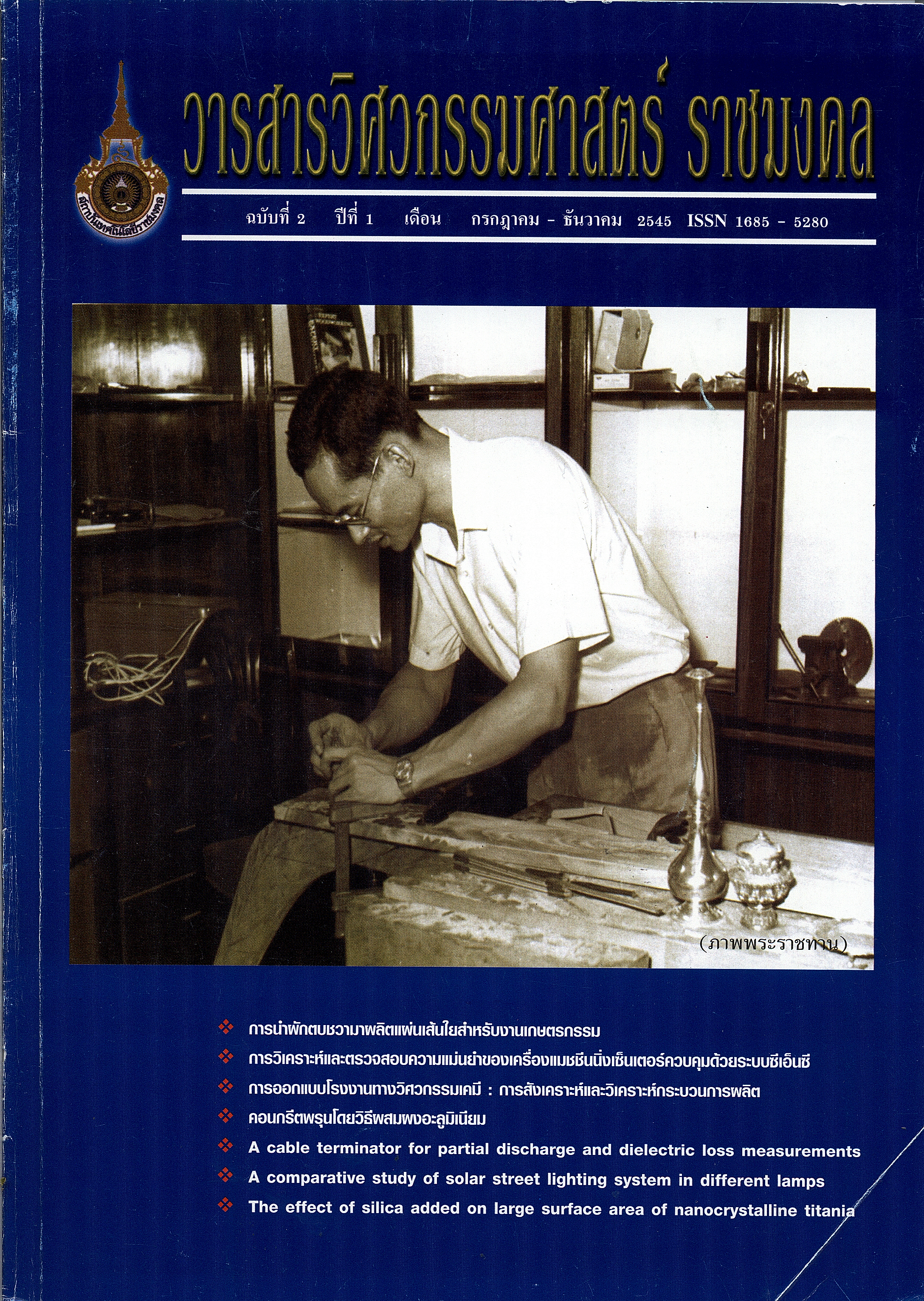The Effect of Silica Added on Large Surface Area Of Nanocrystalline Titania
Main Article Content
Abstract
Nanocrystalline titania was obtained from the glycothermal reaction of titanium (IV) tetra-tert-butoxide in 1,4-butanediol solution. An appropriate amount of tetraethyl orthosilicate having Si/Ti ratio of 0 to 0.5 was added into the solutions before taking place of the reaction. The crystallization reaction was conducted in an autoclave under nitrogen atmosphere and a reaction temperature of 300 degree celsius for 2 hours. The product was then calcined at various temperatures from 300 to 1000 degree celsius. The XRD patterns of the titania products obtained revealed that all the products had the anatase structures. This result indicated that addition of small amount of tetraethyl orthosilicate in the titania provided significantly increasing of the BET surface area and reducing the crystallite sizes, and that the peak intensities were not affected by the tetraethylorthosilicate content in the reaction mixture. These results also suggested that addition of silica causes the anatase-rutile phase transformation to shift markedly toward higher temperatures. However, addition of silica over the proper limit will result in the presence of the amorphous phase leading to drastic decrease of thermal stability of the titania product. In this work, the functional group of the product surface was identified using FT - IR spectroscopy in order to observe this effect.
Article Details
The manuscript, information, content, picture and so forth which were published on Frontiers in engineering innovation research has been a copyright of this journal only. There is not allow anyone or any organize to duplicate all content or some document for unethical publication.
References
X,ding, L..Liu, J. Maier, Sol Ltt. 13(194)462.
C. A. LeDuc, J.M. Campbell and J. A. Rossin.Ind.Eng. Chem. Res. 85 (1996) 2473.
S. Iwamato, W. Tanakulrungsank, M. Inoue,K.Kagawa, P. Praserthdam and S. Uemura J.Mat.Sci. 19 6 (2000) 1439.
M. Inoue, H. Tanino, Y. Kondo and T. Inui,J.Am. Cerm. Soc. 72 2 (1989) 352.
M. Inoue, H. Kominami and T. Inui, Appl.Catal.A 97 (1993) L25.
M. Inoue, H. Otsu, H. Kominami and T. Inui,J.Mater. Sci. Lett. 14 (1995) 1303.
H. Kominami, J. Kato, Y. Doushi, B. Ohtani,S.Nishimoto, M. Inoue, T. Inui and Y. Kera,Catal. Lett. 46 (1997) 235.
H. Kominami, M. Kohno, Y. Takada, M. Inoue.T. Inui and Y. Kera, Ind. Eng. Chem. Res.38 (1999) 3925.
H. Kominami, J. Kato, S. Murakami, Y. Kera,M.Inoue, T. Inui and B. Ohtani, J. Molec.
CatalA 144 (1999) 165.
M. Yoshinaka, K. Hirota and O. Yamaguchi,J.Am. Ceram. Soc. 80 10 (1997) 2749.
S. Music, M. Gotic, M. Ivanda, S.Popovic,A.Turkovic,R. Trojko, A. Sekulic and K. Furic, Mater. Sci. Eng. B47 (1997) 33.
H. Imai and H. Hirashima, J. Am. Ceram. Soc.82,9 (1999) 2301.
X. Gao and I. E. Wachs, Catal. Today 51 (1999): 233-254.
P. K. Doolin, S. Alerasool, D. J. Zalewski and J,F. Hoffman, Catal. Lett. 25 (1994)209.


